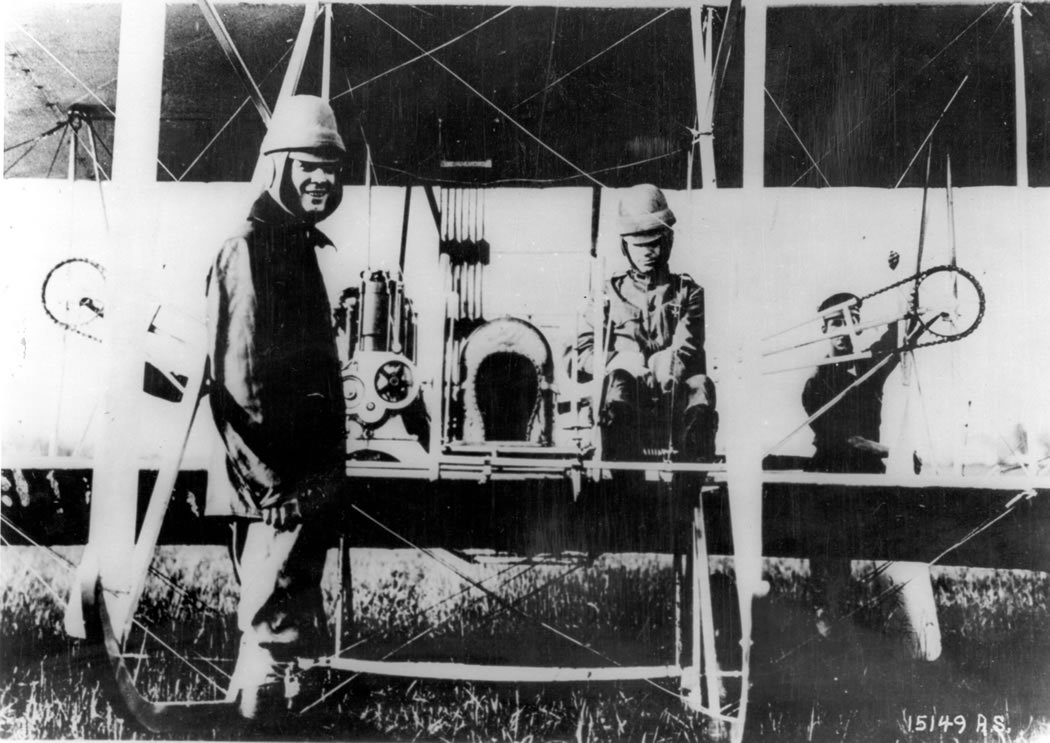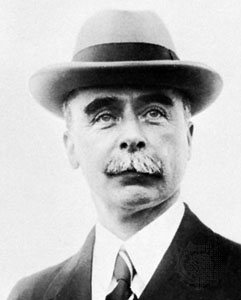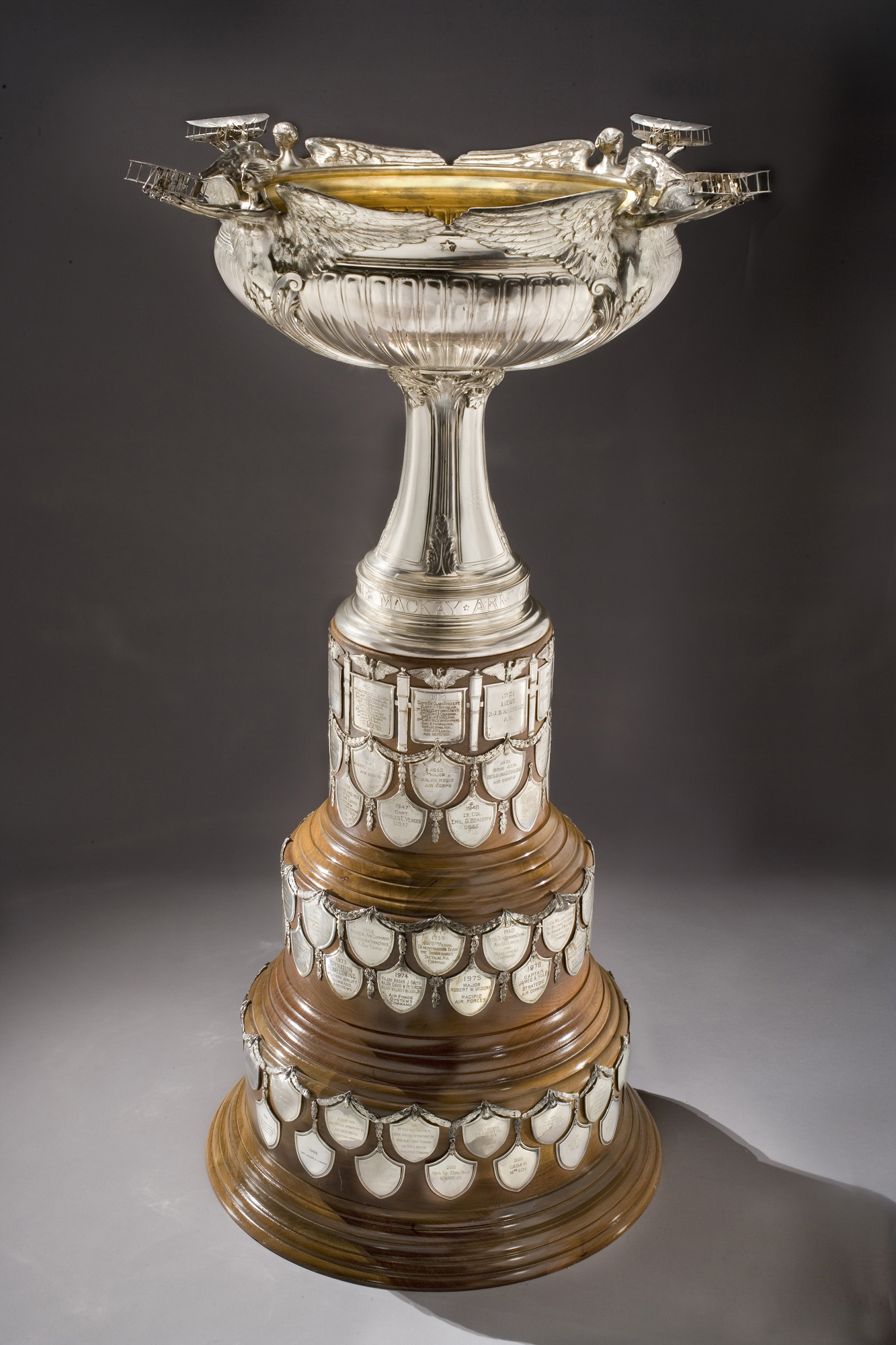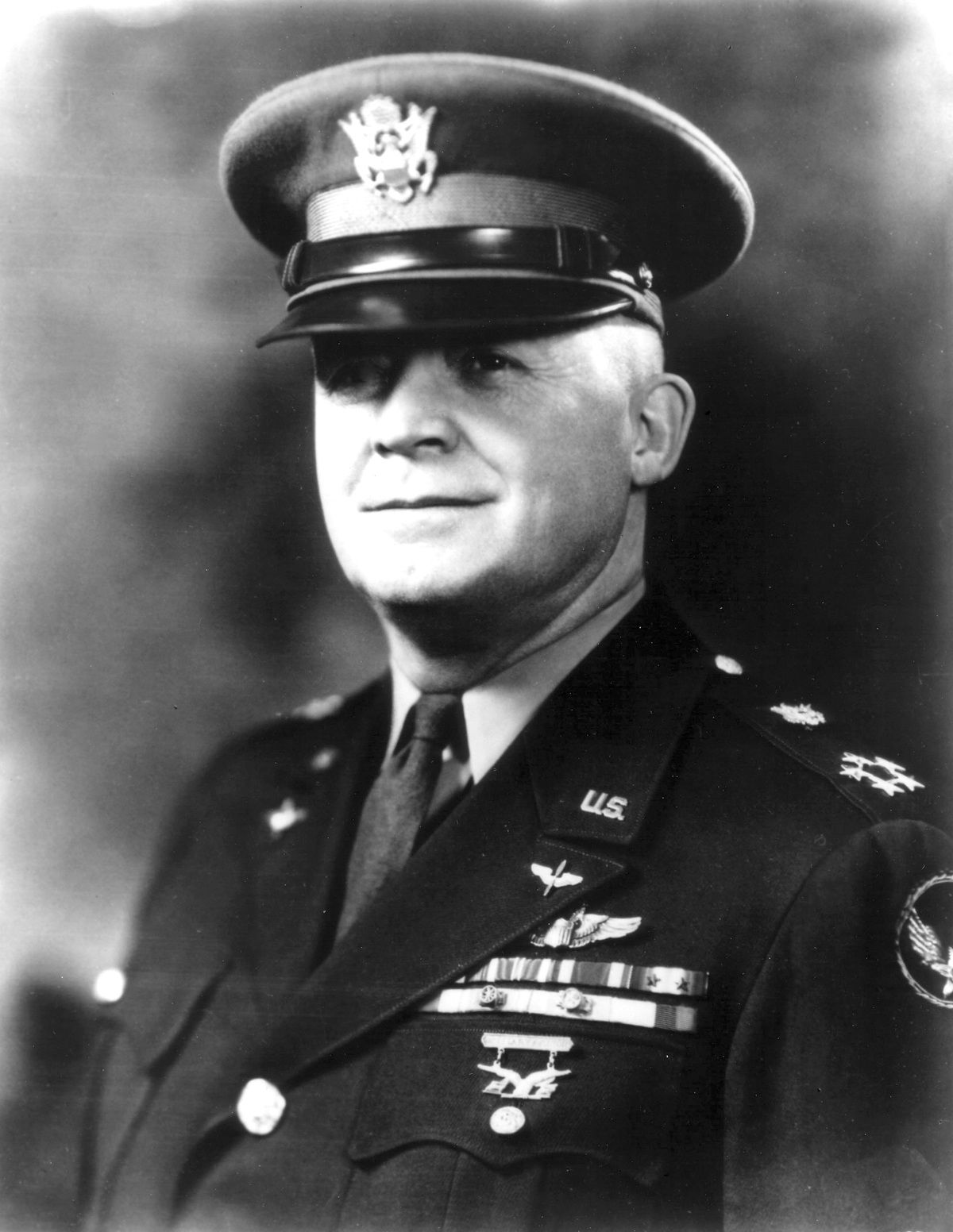
9 October 1912: In October, Lieutenants Henry H. Arnold and Thomas DeWitt Milling, both assigned to the Aeronautical Division, Signal Corps, United States Army, were ordered to enter the competition for the first Mackay Trophy for “the most outstanding military flight of the year.” Milling withdrew because of illness shortly after the competition started.

“Hap” Arnold won when he flew a 40-horsepower Wright Model B biplane over a triangular course from College Park to Washington Barracks at Washington D.C., on to Fort Myers, Virginia, and back to College Park.
The Mackay Trophy was established on 27 January 1911 by Clarence Hungerford Mackay, who was then head of the Postal Telegraph-Cable Company and the Commercial Cable Company. Originally, aviators could compete for the trophy annually under rules made each year, or the War Department could award the trophy for the most meritorious flight of the year.
“The silver Art Noveau trophy, crafted by Tiffany and Company, features four depictions of Nike, the winged Greek goddess of victory, holding the Wright Military Flyer. The achievements inscribed on the mahogany base symbolize the growth of American military aviation from its beginnings to the present day.” —from NASM description

The Model B was powered by a single water-cooled, fuel-injected, 240.528 cubic-inch-displacement (3.942 liter) Wright vertical overhead-valve inline four-cylinder gasoline engine with 2 valves per cylinder and a compression ratio of 4.165:1. It produced 32 horsepower at 1,310 r.p.m. During three years of production (1908–1911) Wright “4-40” engines were built that operated from 1,325 to 1,500 r.p.m. Power output ranged from 28 to 40 horsepower. These engines weighed from 160 to 180 pounds (72.6–81.6 kilograms).
Two 8½ foot (2.591 meters) diameter, two-bladed, counter-rotating propellers, driven by a chain drive, are mounted behind the wings in pusher configuration. They turned 445 r.p.m.
The Wright Model B had a maximum speed of approximately 40 miles per hour (64 kilometers per hour) and its range was 110 miles (177 kilometers).
Approximately 100 Model B aeroplanes were built by the Wrights and under license by Burgess from 1910 to 1914. Three are known to exist.
Arnold won the Mackay Trophy again in 1934 when he commanded a flight of ten Martin B-10 bombers from Bolling Field, Washington, D.C., to Fairbanks, Alaska, and back.
Lieutenant Arnold went on to have a successful career in military aviation.

© 2018, Bryan R. Swopes
“Lieutenant Arnold went on to have a successful career in military aviation.” I would say so!
Proud to say General Arnold went to my HS. Lower Merion, HS. Ardmore, PA.